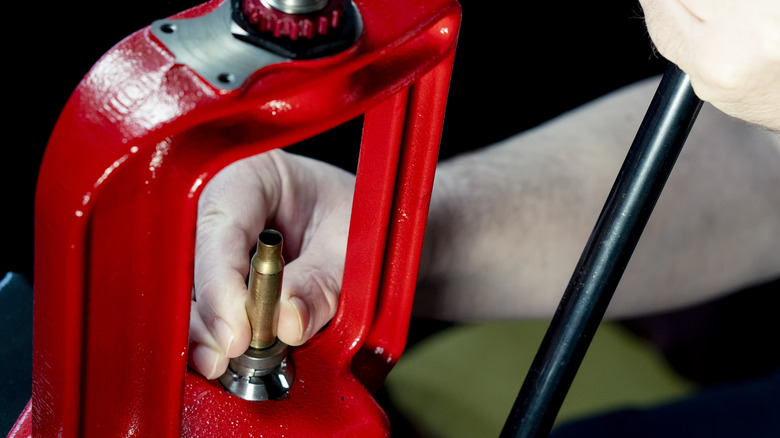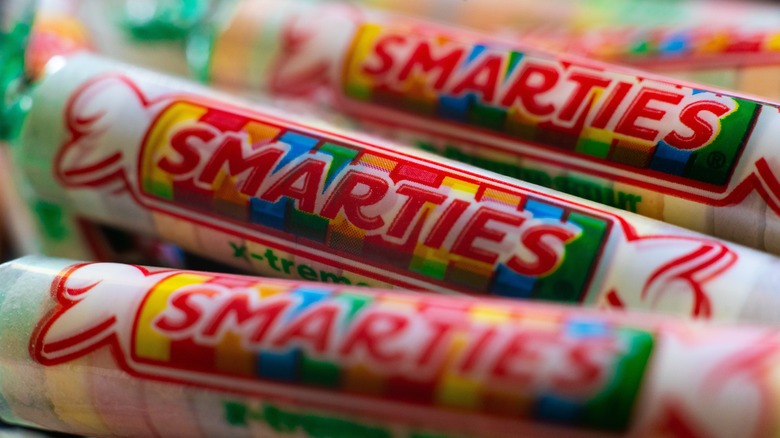The Popular Vintage Candy That Was Originally Made Using WWII Ammunition Presses
They may not be the most popular item in Halloween candy stashes, but Smarties have undeniable lasting power, even if it's one food that Gordon Ramsay avoids at all costs. The teeny, sugary, multicolored wafers that come wrapped in a plastic sleeve have been around since 1949, when recently arrived English immigrant Edward Dee launched Ce De Candy in New Jersey. He didn't have much in regards to candy making equipment, but what he did have was a rented garage space and knowledge. Dee's family made candies in London, so he'd been around the candy-making atmosphere for a long time. He also had two repurposed pellet-making machines from the recently-ended World War II which he used to press his ingredients into what would eventually become Smarties.
The machines were designed to press and make gunpowder pellets for the war effort but they also proved to be well-suited for compressing sugar and other ingredients into the signature shape that Smarties come in. Among his first customers were grocers and tobacco stores to whom Dee made personal deliveries. Today, Smarties is still owned by the Dee family, specifically Edward's three granddaughters, who act as co-presidents. The candies haven't changed much over the decades, but the company has transitioned from manual ammunition presses to automated modern machinery.
Making Smarties today
Smarties are made with 100% dry ingredients, meaning no liquid holds the sweets together. Dextrose, citric acid, calcium stearate, and natural and artificial food dyes and flavors make up the six colors you'll find in any given Smarties roll. White Smarties taste like orange cream, yellow ones are pineapple, pink is cherry, green is strawberry (unlike Starburst where pink is strawberry), purple tablets are grape flavored, and orange tastes like orange. Since Edward Dee passed on his company to his sons and then his granddaughters, many mechanical and technological advancements have been implemented to make the candy-making more efficient. Robotics, conveyors, and computerized machines (all operated and overseen by humans) make over 2 billion Smarties rolls every year. That's not to mention giant Smarties, candy necklaces, sour Smarties (we love the stinging pain of sour candy), and lollipops. The modern candy presses are called tableting press machines.
Smarties are still produced in New Jersey, but are also made in a factory in Newmark, Ontario, which opened in 1963. In The Great White North, they're called Rockets because Nestle had already produced a candy-coated chocolate candy there called Smarties.
Despite the modernization and advancement that's taken place since the company's origin in 1949, co-president, Sarah Dee told CNBC in 2019, "We tried to hold on to a lot of the core classic imagery that our grandfather created way back when he started it, but we try to refresh it," she said. "We're modernizing, but we're still classic. We're still the same as we were when my grandfather started making it in a rented facility."

